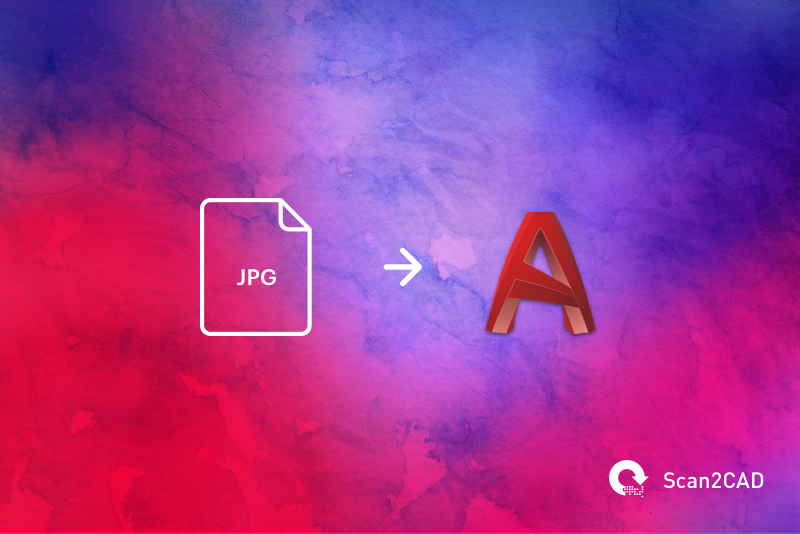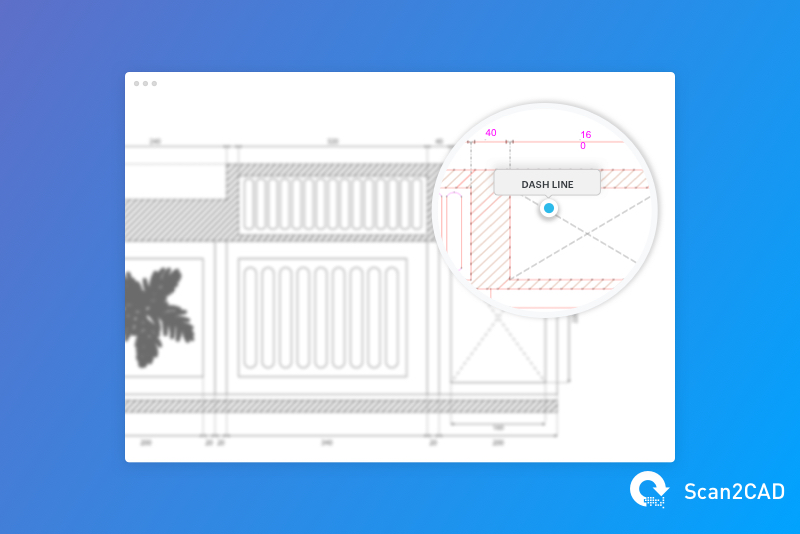If you work with AutoCAD you have probably had a regular requirement to convert photos to CAD for you to use them in AutoCAD. The problem is that many conversion solutions will not give you the results you require. In this post, we’ll discuss how you can accurately convert your image to CAD (either DXF or DWG) without having to go through the rigorous process of manually tracing/drawing your photo or image designs.
Let’s begin with a demonstration of how professional conversion software, Scan2CAD, can convert an image to an AutoCAD format.
Table of contents
- What types of images can you convert to AutoCAD?
- What are your options when converting an image to AutoCAD?
- Why do some converters create poor quality results?
- What if the image contains text?
- Conclusion – How to convert an image to AutoCAD
What types of images can you convert to AutoCAD?
To answer that question, we should first get specific; in this post, we’re focussing on converting raster images to an AutoCAD format (i.e. DXF or DWG). A raster image is an image formed of pixels such as JPG, BMP, TIF, and many more file types.
Raster images are different from vector images. Vector images (such as vector PDF files) are typically much easier to convert to an AutoCAD format because DXF and DWG are also vector file types. The technical term for converting raster images to DXF/DWG is ‘raster to vector conversion’.
Scan2CAD supports all the raster and vector image formats you would come across including JPG, BMP, TIF, DXF, DWG as well as raster and vector PDF files.
What are your options when converting an image to AutoCAD?
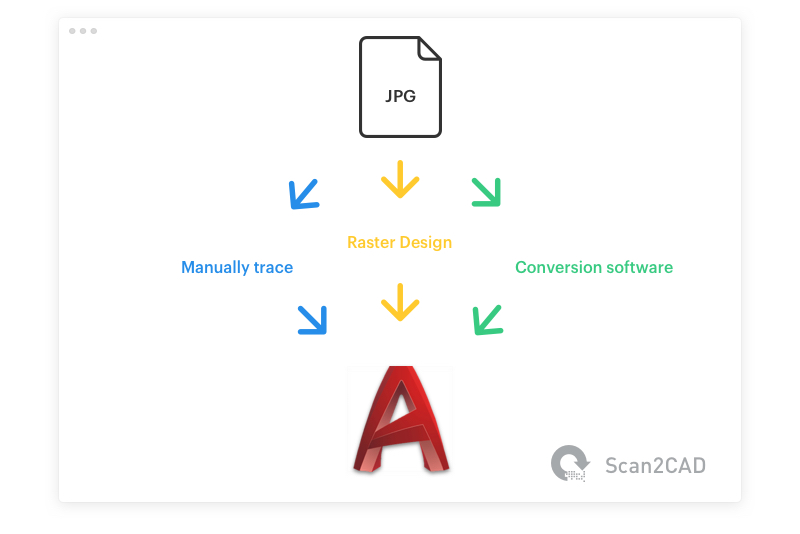
When you need to convert an image to AutoCAD you have three options:
- Manually trace the image
- Convert using Raster Design
- Convert with conversion software
Option 1: Manually trace the image
If you opt to manually trace a drawing you will commit yourself to a long painstaking process of drawing over each individual element in your image. It’s surprising that many people are still manually tracing raster images when automatic conversion software could save them countless hours and therefore budget.
Some AutoCAD users may prefer to manually trace an image because they believe that it is not possible to achieve a high degree of accuracy with conversion software. This is due to the vast difference in conversion accuracy offered by the available JPG DWG converter or other conversion software (most notably, the poor results provided by online converters). In almost all cases, the far better option is to automatically convert your image to AutoCAD format and then manually edit the file to get that final 1% accuracy if required.
Option 2: AutoDesk’s Raster Design
Raster Design is Autodesk’s solution for automatically converting a raster image for AutoCAD.
Unfortunately, Raster Design is not AutoDesk’s core product and it doesn’t offer much of the required functionality to produce useful converted images, therefore a significant amount of manual input is still required.
Raster Design utilizes simplistic vectorization methods which are not designed to convert each image element to its correct vector CAD entity. Instead, all elements will be represented as lines or polylines.
Raster Design may be commonly used by AutoCAD users due to the fact that it is part of the AutoDesk product offering. Therefore there is little friction in trying Raster Design’s conversion results first before finding that better results can be achieved with another solution.
Option 3: Convert with conversion software
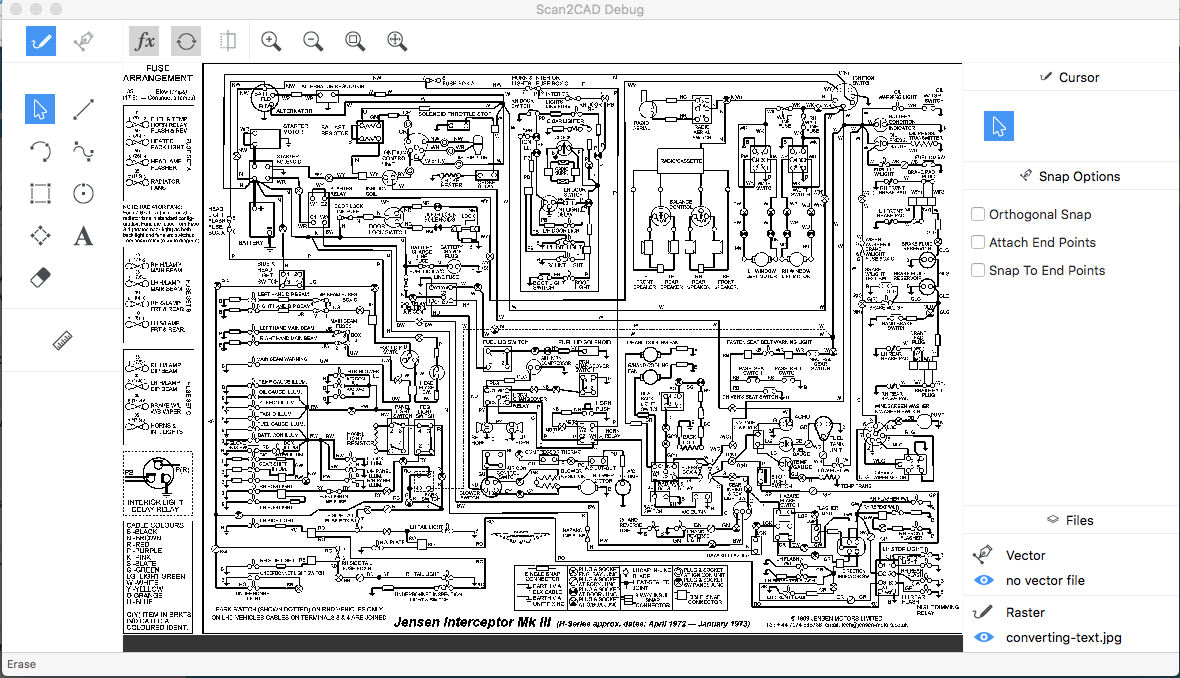
Using Scan2CAD to convert text and other elements in an image
Scan2CAD is raster and vector conversion software designed specifically for CAD & CAM. We have spent the last 20 years focused purely on improving the conversion performance, saving time and money for the world’s design, manufacturing, and AEC companies.
If you need to convert an image to AutoCAD format you will most likely find that Scan2CAD will offer the best performance in almost any circumstance.
Unlike Raster Design, Scan2CAD is a standalone application that doesn’t need to be run as a plugin to other CAD software. Scan2CAD offers OCR and object recognition which means you will convert image entities (including text) to the correct vector CAD data.
Why do some converters create poor quality results?
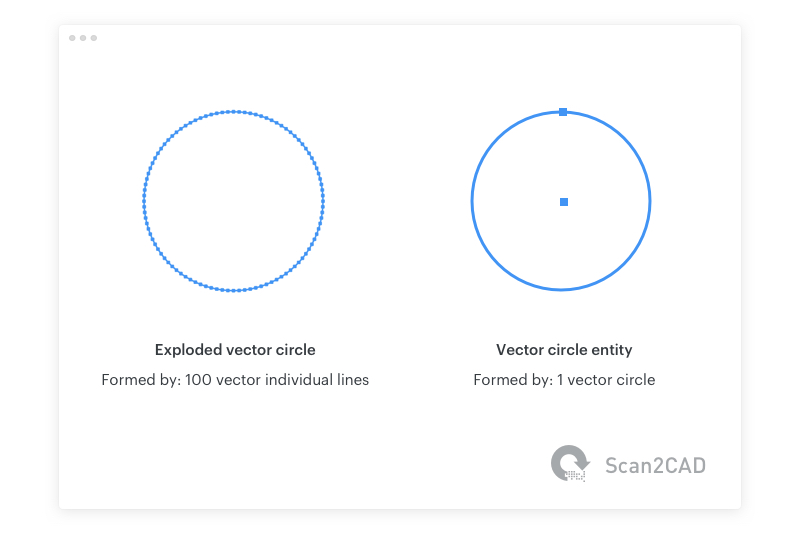
Scan2CAD converts a circle to a vector circle entity, not a collection of lines
The worst type of image conversion would be to convert every object in your image to the same vector element. For example, some vectorization software might convert a circle in an image to thousands of small vector lines or polylines instead of a single CAD circle entity.
With this type of simplified vectorization software; the text, arcs, circles, and all other elements would be represented as many individual connected vector lines. But that is practically useless if you need to edit the CAD drawing in AutoCAD.
This is why you need conversion software that has object recognition capabilities. What is object recognition? It is the process of identifying entities (objects) in your raster image and converting them to the correct vector CAD entity.
What if the image contains text?
If your drawing contains the text you will need to ensure that your conversion software has OCR capabilities. OCR (optical character recognition) converts text in your image to editable vector text strings, identical to the text strings you would create when writing text in AutoCAD.
If your conversion software does not have an OCR feature, the software will instead convert all the text in your image to a collection of vector lines or polylines. We call this ‘exploded text’ but it is not really a ‘text’ at all, but simply vectors in the shape of a ‘text’.
Text converted to individual vector lines
Text converted to text strings using OCR
The ‘exploded text’ can not be edited in CAD software so you will need to erase these vectors and redraw the text in AutoCAD.
Conclusion – How to convert an image to AutoCAD
If you need to convert an image for AutoCAD we recommend that you choose software designed specifically for that purpose.
Scan2CAD offers the most accurate photo to CAD conversions of your raster and vector designs. With automatic conversion software, you will save countless hours spent fixing poor-quality conversions or manually tracing files.

